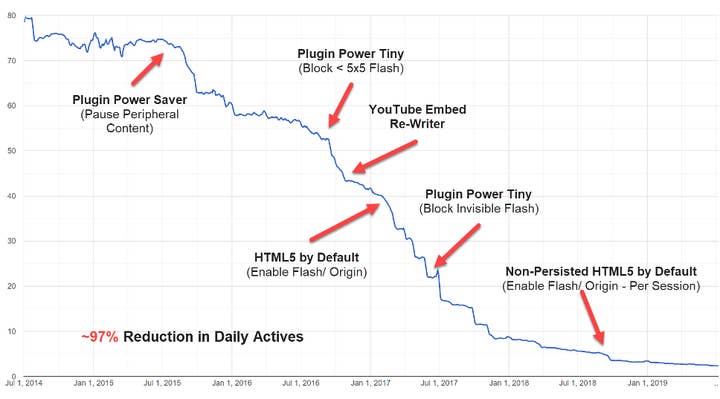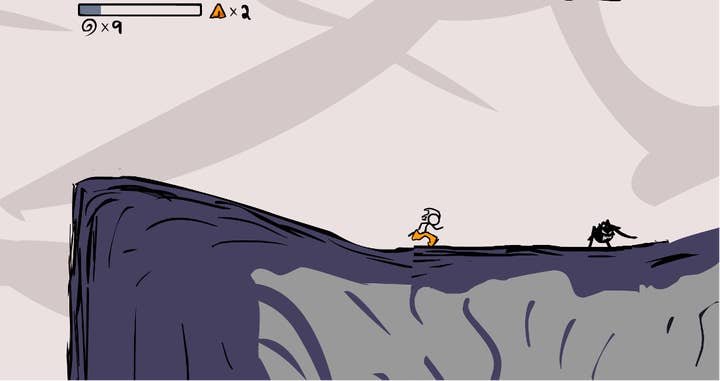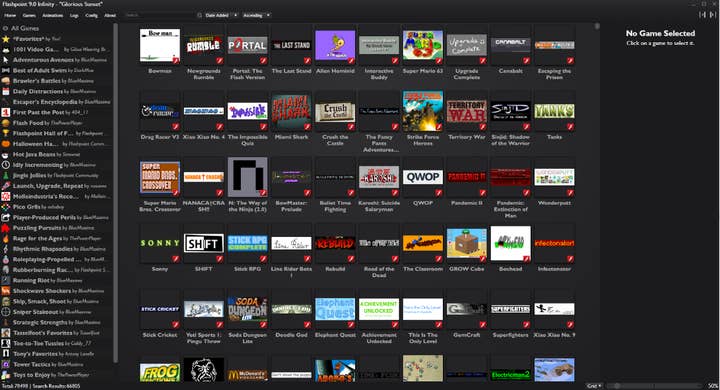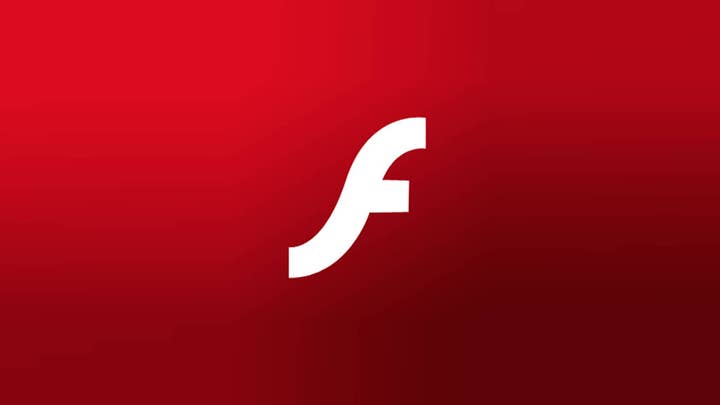The end of Flash: What legacy will it leave behind?
Developers explore the influence the 24-year-old program had on the games industry
On the 31st of December 2020, Adobe began the End of Life (EOL) cycle for its web development program Flash Player.
After a three-year-old announcement by the company that it would eventually block all content from running on the software, it is finally coming to an end on the 12th of January, with the company blocking all programs reliant on Flash Player completely.
The reasoning for Flash's prolonged retirement is both a reaction to the dwindling usage and decline of security. In a report from Google in July 2017, it states that the frequency of Chrome users visiting a site with Flash-integrated programs has declined from 80% to only 17% over a three-year period.
Adobe further explained its reasoning on the Flash EOL information page: "Open standards such as HTML5, WebGL and WebAssembly have continually matured over the years and serve as viable alternatives for Flash content. Major browser vendors are integrating these open standards into their browsers and deprecating most other plug-ins (like Flash Player)."

Despite the unusually lengthy preparation gap, it is still no less significant of a loss to the games industry. Flash Player has been a hallmark of a gaming generation since its inception in 1996, being used to create millions of animations, games, and other various programs. It's hard not to feel grief over its eventual demise at the hands of emerging technology that is better integrated but ceases to have the haphazardly irregular charm that Flash does.
As such, it's worth looking into what exactly made Flash so compelling -- from its accessibility for anyone who has a knack for developing, to the sheer simplicity and visual appeal of its components. We also need to look into what exactly caused Flash's eventual fall, whether the fault fell at the feet of Adobe, or whether time itself was to blame for a program that just doesn't fit the modern games industry.
One industry professional who has more than a right to call himself a Flash veteran is Brad Borne of Borne games. Brad has been a developer for some time, creator of well-known Flash-operated games such as the Fancy Pants Adventure series and Mirror's Edge 2D.
Borne began releasing Flash content in late 2003 with his first animation Clay Needs Tea on popular portal Newgrounds. However, Borne wouldn't reach acclaim until March 2006 with the release of Fancy Pants Adventures. The game, one of the most well-known Flash titles to date, is a side-scrolling platformer with a focus on speed and momentum, similar to the likes of Sonic the Hedgehog.

Borne was initially drawn to the program through its reliance on visual programming -- a contrast to most other engines, which work through complex coding languages.
"When I started trying to make games, I had to figure out how to do all this stuff like distance measurements," he says. "I need to be able to see it to make sense of it. When you have something on stage and you have it rotating or you see the measurements for distance, it makes sense. The written form never made sense to me."
"Flash is a very natural intersection of art and gameplay, perfect for the creative mind that isn't very programmer-oriented"
Brad Borne, Borne Games
As of now, Fancy Pants Adventures has over two million views and over 5,000 favourites on Newgrounds alone, with an overall rating of 4.63/5. Copies of the game can be found on almost any Flash portal you can find like Kongregate or Miniclip. And that doesn't even count the game's sequels, which expand upon the original with new levels and features.
"Flash is this very natural intersection of art and gameplay, that's perfect for the creative mind that isn't very programmer-oriented," Borne adds.
His reasoning for opting to use Flash is not unlike many other prevalent creators who have seen internet fame come from their own games and animations. And the community that formed around Flash Player became one of its main strengths.
Many Flash developers started out as teens wanting to make something for the world, and still join together in events, podcasts, and other such gatherings to chat with community members, some of whom took their own dive headfirst into the Flash Player pool and emerged from the depths as notable indie developers and artists. Examples include Arin Hanson AKA Egoraptor of Game Grumps, Dan Paladin who went on to found Castle Crashers and Battleblock Theater studio The Behemoth,and Marcus Bromander, who created the Henry Stickmin series and now develops Among Us for Inner Sloth.
Borne, like many others, was able to meet such creators during his time attending several of the meetups.
"The Flash animators and developers that I met are hands down some of the nicest people I've ever had the pleasure to associate with. They're all just so nuts and so nice," he says.

It would seem Flash Player blurred the line between players and creators in a way that is wholly unique when compared to other engines, a line which the Fancy Pants developer is all too familiar with: "Whenever I went to a Newgrounds meetup, all the creators were just the biggest fans of each other. It was so funny."
Although this sense of community had a strong effect, it was largely the misunderstanding of why it formed that began the slow deterioration of Flash. As the internet was getting more popularized and reliant on algorithms, Adobe began to mold the program in ways that would be in part to blame for its eventual demise.
"It was the perfect storm. Small file sizes, low requirements, a true form of meritocracy"
Ben Latimore, Flashpoint developer
"Games would be rated on by real people, and that was part of the game too," Borne explains. "It felt like your vote mattered, that you brought a game up to the light, you got it through the portal. It was real people that were doing that.
"The Newgrounds crew would put things on the front page, it was hand-curated. You just don't see that anymore, everything moved to algorithms. One of the most famous examples was when YouTube destroyed animation because everything was based on watch times and how quickly you could pump content out."
It wasn't just the internet's eventual reliance on algorithms that built the coffin Flash would eventually inhabit, however. The software already had a terrible reputation for a variety of reasons, namely the use of pop-up ads and an oversaturated market that was a side effect of its ease of use.
Flash creators know the problem with its reputation all too well and Borne is no exception: "Flash was used as an insult so often. I know what they're saying by that and I try to make my own games not feel like Flash. I can't think of anything else that's loved more by so many people that just gets completely dismissed."
However, it's not all doom and gloom. Despite many Flash games being lost for good, there are still efforts to try to preserve whatever is found in the vast, emptying halls of Flash's library. One of the biggest efforts at the moment is the semi-open source project, Flashpoint.
The program currently has over 70,000 games archived and 8,000 animations over 20 different platforms. Programs are submitted via online request forms which members of the community can fill out and send to the developers if they have Flash games to submit. Flashpoint comes in two forms: the aptly dubbed Ultimate, which allows for every game to be played readily offline, and Infinity, which has a slightly smaller file size and lets users hand-pick games to download.

The project was created, developed and maintained by YouTuber and developer Ben Latimore AKA Blue Maxima. As an avid fan of technological history, he explained how Flashpoint came about.
"Around the end of 2017, when I saw that Flash was going away and saw that nobody had done what Flashpoint is, I got to work backing up Flash game sites and eventually started Flashpoint. It appears to have worked out well enough.
"I can't think of anything else that's loved more by so many people that just gets completely dismissed"
Brad Borne, Borne Games
"The thing about Flash games is that there are a lot of little things they do that make them hard to preserve properly like site-locks, multiple files, or server reliance. Preservation project means preserving the original as much as possible without any modification. As a result, Flashpoint uses its own server, hosted on the user's computer, combined with a proxy to trick games into thinking they are on the internet proper, not on someone's hard drive."
Latimore's motivation to preserve this part of gaming history comes from his time playing the multitude of Flash games available on the internet rather than nostalgia for development itself.
"I never had access to the software" he says. "I was more aligned to GameMaker in my school years. My story is probably familiar to thousands of kids around my age or a little later; nothing better to do in the school computer labs than to pass around the few web portals that hadn't been blocked on the school's internet at that point.
"It was the perfect storm. Small file sizes, low requirements, a true form of meritocracy. It all morphed into one unstoppable entity, where literally anyone can hop onto a Flash portal and find a new game to share with their friends. Not to mention the sheer variety and amount of content that could keep people entertained for hours. It was well and truly a precursor to the indie development scene we have today."
That raises a relevant question. As much as Flash is on the brink of collapse, will there be someone to come along and pick up the pieces? Have the likes of indie developers and newer, more fleshed out sites like Itch.io taken the spot that Flash once took? The Flashpoint programmer seems to disagree.
"A neat Flash gem could succeed ten years ago with little marketing. Now you need a mass grassroots movement to get something off the ground"
Ben Latimore, Flashpoint developer
"With the titanic difference between the console, mobile and desktop market these days, you aren't going to get anything with that kind of easy spread," says Latimore. "Where a neat little Flash gem might have succeeded ten years ago with little marketing, these days you need a mass grassroots movement to get something off the ground."
Perhaps in that regard, Flash was simply running down the clock before its many flaws would come to the surface, as the developer explains.
"I get why they're doing it really. Flash was installed in a ridiculous number of machines that are eventually going to be left open when they stop updating Flash. It really did have a ton of security holes because it was basically code on code on code."
Latimore keys into this further when talking about the fragility that internet servers have: "Nothing lasts forever on the internet. It's all on a black box somewhere in the world. The day someone decides to shut that box off is the day Flash games truly go away."
Borne adds: "That Wild West era has been dead for a long time. The internet has changed so much -- it went from message boards and things like AIM to more grouped, forum-based things like Discord."
Whether this era of freeform games development ends with Flash, or continues in engines like Unity, it's clear that nothing will be quite the same. No program will be as simultaneously popular and resented as Flash was, nor will any of them be treated to quite the same blurred line between creator and player.
It will always be impactful when something as influential as Flash finally comes to pass, but its effects will be felt throughout many corners of the industry for some time. The fact that something like Flash was able to flourish in the way that it did has had a major influence on indie games and AAA games alike.









